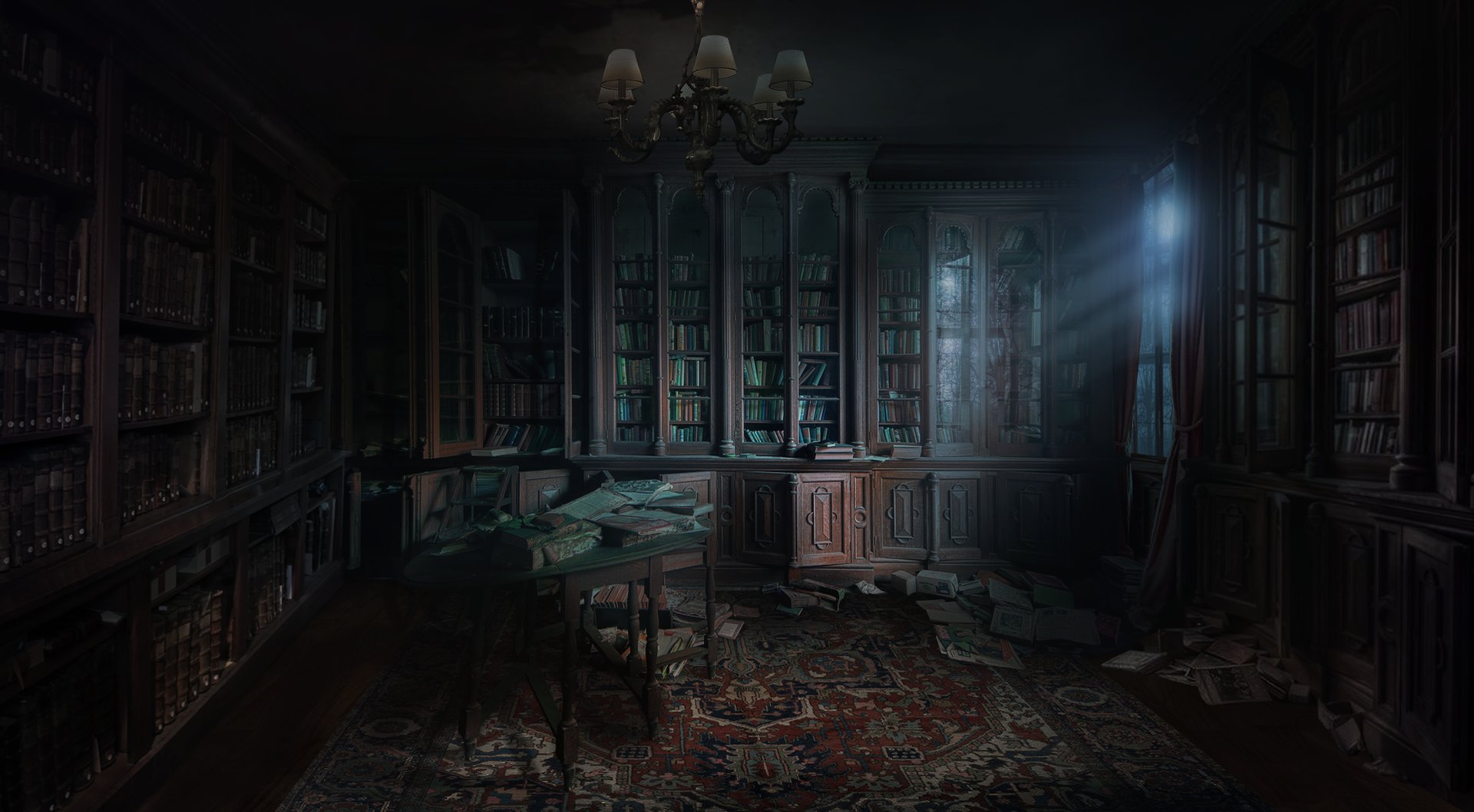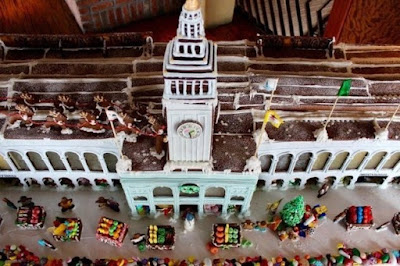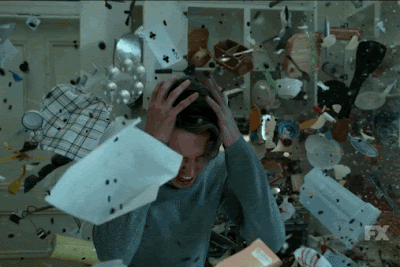Copyright 2021 by Gary L. Pullman
Ambrose Bierce: “The Damned Thing,” “A Tough Tussle”
Bierce's ideas are original and intriguing. He also reveals aspects of horror that aren't always apparent in seemingly ordinary, if sometimes also terrible, incidents and situations.
William Peter Blatty: The Exorcist
I read this novel when I was twenty; then, I saw the movie. Both are first-rate excursions into terror. Blatty's literary art is discernible even in his metaphors.
Ray Bradbury: “Heavy-Set,” “The Veldt,” “The Foghorn”
A poetic writer who is especially adept at imagery and symbolism, Bradbury writes tales are sometimes that are much “deeper” than they might sometimes first appear.
Kate Chopin: “The Story of an Hour”
In the hands of a skilled writer, an imagined anecdote can be a powerful transmitter of both feminist angst and horror.
Sir Winston Churchill: “Man Overboard”
Churchill echoes the existential despair of Stephen Crane's “The Open Boat” in this much more economical, if not as layered, tale of the sea.
Samuel Taylor Coleridge: The Rime of the Ancient Mariner, “Kubla Khan”
In teaching a lesson about respecting life, Coleridge also teaches readers about crafting a well-told horrific tale and shows, in the process, his own poetic genius.
Stephen Crane: “The Open Boat”
Crane's story reflects not only the traditional categories of narrative conflict, but also a fourth, “man vs. God,” which is echoed in Sir Winston Churchill's short story “Man Overboard.”
Charles Dickens: “The Signal-Man”
For the background to this horrific short story, see my Listverse “listicle,” “10 Classic Stories Inspired by True Events.”
Charlotte Perkins Gilman: “The Yellow Wallpaper”
For the background to this horrific short story, see my Listverse “listicle,” “10 Classic Stories Inspired by True Events.”
Nathaniel Hawthorne: “The Birthmark,” “Rappacinni's Daughter”
For the background to “The Birthmark,” see my Listverse “listicle,” “10 Classic Stories Inspired by True Events.”
O. Henry: “The Ransom of Red Chief,” “The Gift of the Magi”
Many horror stories end with a twist. Although his tales are not horror stories, O. Henry is a master at creating such ironic endings.
Shirley Jackson: “The Lottery,” “An Ordinary Day, with Peanuts,” “Trial by Combat”
Slice-of-life fiction becomes horrific in
“An Ordinary Day, with Peanuts.”
W. W. Jacobs: “The Monkey's Paw”
A true classic of horror!
Stephen King: 'Salem's Lot, Desperation
As in Frank Peretti's Monster and Dean Koontz's The Taking, God makes a cameo appearance in King's Desperation. (Other Christian authors on this list include Flannery O'Connor and William Peter Blatty.)
Dean Koontz: Phantoms, The Taking
Is the horror of The Taking an account of an alien invasion or something even more sinister?
D. H. Lawrence: “The Snake” and “The Odour of Chrysanthemums”
In “The Snake,” we meet a god of the underworld; in reading “The Odour of Chrysanthemums,” I understood why the scent of roses reminds me of death.
Bentley Little: The Revelation, Dominion
Although, like Stephen King's later fiction, Little's novels often fall apart at the end, the beginning and the middle are captivating and frequently alternate between frightening and being exceedingly eerie.
H. P. Lovecraft: “The Lurking Fear”
Lovecraft does not disappoint in this story or in most of his other work. He brought a new perspective to horror fiction, which is not an easy accomplishment.
Daphne du Maurier: “The Birds”
Any writer whose story Alfred Hitchcock picked as the basis of one of his movies has to be a master of suspense.
Robert McCammon: Swan Song, Stinger
Although I later lost my taste for McCammon, his early novels are entertaining.
Saki (H. H. Munro): “The Open Window”
Like O. Henry, Saki sure knows how to twist a plot. In the process, he also reveals character concisely and very well.
Joyce Carol Oates: “Where Are You Going, Where Have You Been?”
Reading this story is a bit like watching a music video featuring a psychopathic musician and his groupie victim.
Flannery O'Connor: “The Life You Save May Be Your Own,” “A Good Man Is Hard to Find”
Although she is not a horror writer per se, O'Connor, something of a Christian, female Edgar Allan Poe, “shouts” and “draws big pictures” for a reason.
Frank Peretti: Monster
Peretti's skill as a writer shows in many ways, not the least of which, in this novel, is his mapping of the monstrous.
Edgar Allan Poe: “The Cask of the Amontillado,” “Hop-Frog,” “Berenice,” “The Masque of the Red Death,” “The Premature Burial”
I might have included all of Poe's works.
Douglas Preston and Lincoln Child: Relic, Crimson Shore
Relic is nothing less than a terrific, terrifying tour de force. Crimson Shore, intriguing for its setting, characters, and situation, is often more suspenseful than frightening, but it is also a fast read.
William Shakespeare: Titus Andronicus, Hamlet, King Lear
Critics are right: Titus Andronicus is certainly Shakespeare's worst play, but, hey, it's still Shakespeare (and it's truly horrific as well). Hamlet is unforgettable, and King Lear is part horrifying, part terrifying, and entirely tragic.
Dan Simmons: Subterranean
This novel is simply harrowing.
Craig Spector and John Skipp: The Light at the End
A Barlow-type creature of the night seems to have somehow slipped his way between the covers of John Godey's (Morton Freedgood's) 1973 thriller The Taking of Pelham 123. It's good fun, amid the splatter of blood and gore.
Bram Stoker: “The Judge's House,” “The Burial of the Rats,” “Dracula's Guest”
All of these short stories show, in miniature, the mastery of both writing and horror that are later exhibited more fully in Dracula.
Rabindranath Tagore: “The Hungry Stones”
At first, puzzling, Tagore's exotic tale is finally downright spooky.
Mark Twain: “Mrs. McWilliams and the Lightning,” “Mrs. McWilliams and the Burglar Alarm,” “The Invalid's Story”
No, Mark Twain (Samuel Langhorne Clemens) is not a horror writer, but he could have been!
H. G. Wells: “The Cone,” “The Red Room”
If you never fully appreciated Wells's artistry, both of these stories will show you that the man was the equivalent of an impressionistic painter who used words, instead of brushes, on pages, rather than on canvases. Wells is a true master!
Oscar Wilde: The Picture of Dorian Gray
Wilde's novel, like so many others, is far better than the movie adaptations of it. Everything complements everything else: plot, characters, setting, theme, and tone.
William Butler Yeats: “Leda and the Swan,” “The Second Coming”
More suggestive than definitive, Yeats's poems are often intimations of terror that escapes even his mastery of the language; his poems haunt their readers--haunt them and, maybe, change them. (You have been warned!)
Note: For additional writers of horror, you may wish to consult https://en.wikipedia.org/wiki/List_of_horror_fiction_writers






























